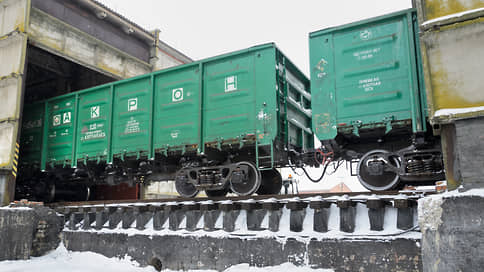The share of container transportation of mineral fertilizers is growing faster than the market average
[ad_1]

The trend towards containerization has accelerated in the transportation of mineral fertilizers. The share of container transportation, although small, is growing quite quickly, significantly outpacing the overall market dynamics. According to experts, the main advantage of container shipping is that it allows you to get rid of dependence on specialized ports, provides an advantage in speed on the railway, as well as ease of storage and shipment.
Suppliers of mineral fertilizers are increasingly choosing containers as containers for transportation, according to a study by the Institute for Problems of Natural Monopolies (IPEM). Fertilizer loading in general, according to Russian Railways, increased by 4.6% over ten months, to 52.7 million tons, in October – by 9.8%, to 5.6 million tons. At the same time, transportation of fertilizers in containers increased over ten months by 2.2 times compared to the same period last year, to 228.2 thousand tons, in October – more than three times, to 33.3 thousand tons.
The share of container transportation of fertilizers is only 0.43%, but over the year it has more than doubled.
Currently, 17% of all fertilizer loading on the network comes from Belarusian products, more than 90% of which transit through Russia for export. Since the beginning of the year, shipments of Belarusian fertilizers have tripled, to 8.8 million tons. Belarusian products are also being quickly containerized: while overall shipments of Belarusian fertilizers in October decreased by 4.2% compared to September, their loading in containers increased by 41.3% and 2.3 times in annual terms.
As noted in the IPEM study, in 2023 there will be a reverse redistribution of fertilizer shipments from the south to the ports of the North-West. Thus, in the ten months of the year, 3.4 million tons were sent to the ports of the Azov-Black Sea basin, which is 10% less than a year earlier, while loading to the ports of the North-West increased by 9%, to 22.3 million tons .
Shipments of fertilizers in containers continue to grow in both directions – 1.8 times in the south and 2.8 times in the northwest.
The largest fertilizer producers did not comment on the situation. Kommersant’s sources in one of the companies reported that its container transportation is not growing due to high costs and limited destinations, since the main international companies (Maersk, MSC and others) have left Russia. “We only transport value-added fertilizers,” he explained.
The total volume of exports of mineral fertilizers from Russia, according to the Gazprombank Center for Economic Performance, increased by 9.4% in the first nine months, to 25.3 million tons. As the deputy head of the center, Kirill Nikoda, said during the conference “Transportation of Mineral Fertilizers and Raw Materials,” the main driver was the increase in supplies of urea (by 8.6%) and potash fertilizers (by 9.7%). However, exports have not yet reached the level of 2021, he said. Exports to India and Turkey more than tripled, while the share of European countries fell from a third to 13%, despite the fact that fertilizers were removed from sanctions. Shipments to Brazil also declined, but were offset by shipments to other Latin American countries. Brazil in January-September remained the largest importer of Russian fertilizers (24% of the total volume), India is in second place (14%), 12% and 9% are supplied to the USA and China, respectively.
Deputy General Director of IPEM Vladimir Savchuk notes that transportation in containers allows fertilizer producers, on the one hand, to gain access to scarce railway infrastructure, and on the other, to ensure transshipment in the absence of specialized ports.
According to Mr. Savchuk, manufacturers note the convenience of storage and shipment in containers. Also, he notes, the container provides versatility; cargo flows can be easily switched to another container port. Companies have an intention to develop this method of delivery, says Mr. Savchuk, believing that the transportation of fertilizers in containers will definitely grow. President of the National Research Center for Transportation and Infrastructure Pavel Ivankin agrees that the trend toward containerization of fertilizer transportation is driven by the desire to simplify transshipment—to reduce dependence on specialized ports. He recalls that transporting bulk fertilizers is complicated by a number of environmental restrictions.
[ad_2]
Source link





